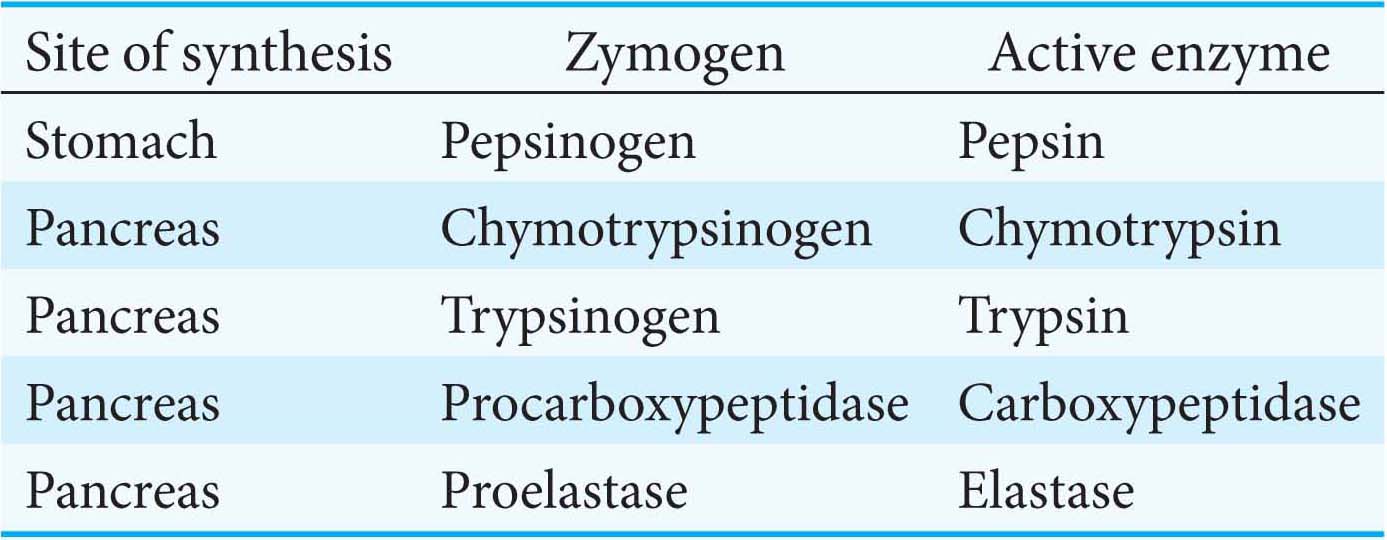14.1 Digestion Prepares Large Biomolecules for Use in Metabolism
✓ 1 Describe how dietary proteins, carbohydrates, and lipids are digested.
Let us begin our study of digestion by examining what happens after we take a bite of pizza, a delicious concoction of lipids, carbohydrates, and proteins (Figure 14.1). The components of our meal must be degraded into small molecules for absorption by the epithelial cells of the intestine and for transport in the blood. Proteins are digested to amino acids by proteolytic enzymes (proteases) secreted by the stomach and pancreas. Polysaccharides, such as starch, are cleaved into monosaccharides by α-amylase from the pancreas and to a lesser extent in saliva. Lipids are converted into fatty acids by lipases secreted by the pancreas. All of the digestive enzymes are hydrolases; that is, they cleave their substrates by the addition of a molecule of water.

248
Most Digestive Enzymes Are Secreted as Inactive Precursors

With the exception of α-amylase, all digestive enzymes are secreted as inactive forms, called zymogens or proenzymes, which are subsequently activated by proteolytic cleavage (Table 14.1). Before their secretion, zymogens exist in granules near the cell membrane. In response to signals discussed below, the granules fuse with the cell membrane, expelling their contents into the lumen of the intestine. The zymogens are activated when a part of the inactive precursor is proteolytically cleaved. The enzyme enteropeptidase (also called enterokinase), secreted by the epithelial cells of the small intestine, activates the pancreatic zymogen trypsinogen to form trypsin, which in turn activates the remaining pancreatic zymogens. Indeed, the stomach enzyme, pepsin, is itself secreted as a zymogen called pepsinogen. Pepsinogen has a small amount of enzyme activity and can activate itself to some degree in an acidic environment. The active pepsin activates the remaining pepsinogen.